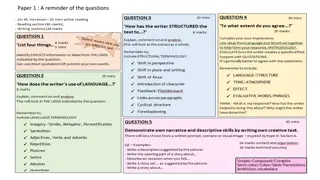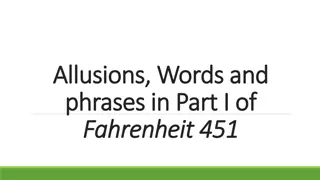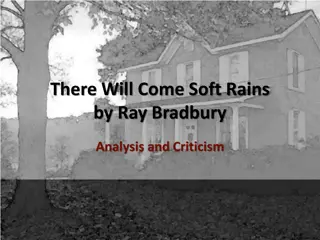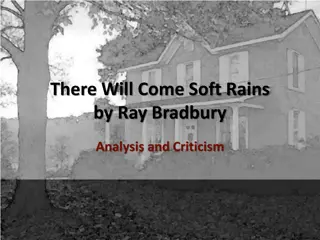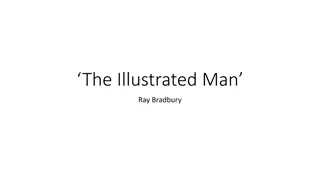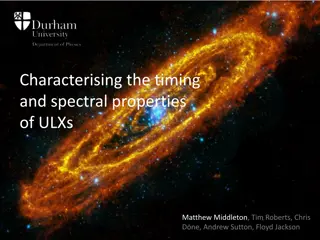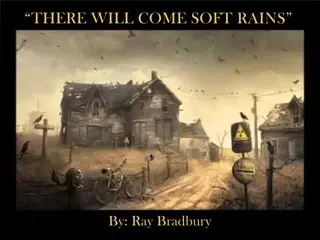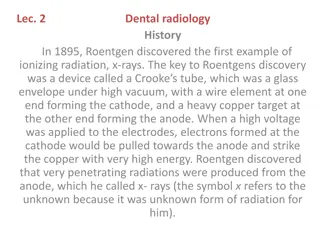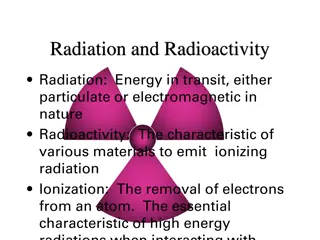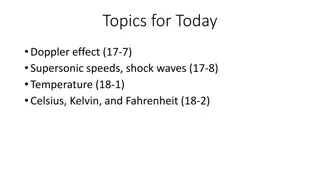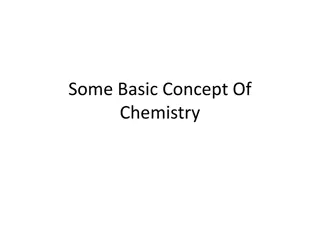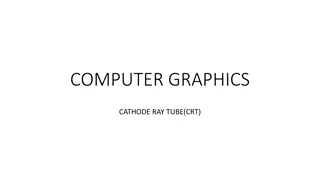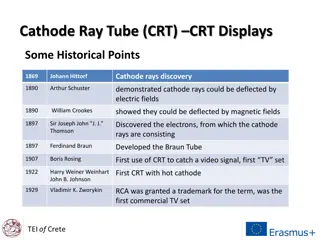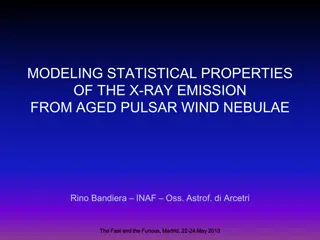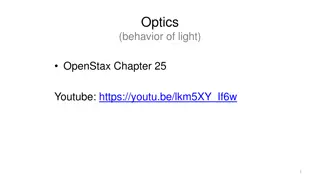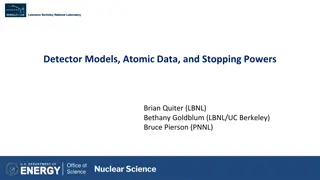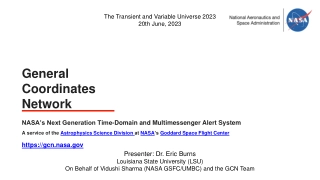Insights into Fahrenheit 451 by Ray Bradbury
Explore the influential novel Fahrenheit 451 by Ray Bradbury, delving into its origins, themes, and relevance in the context of societal criticism, dystopian elements, and historical backdrop of the 1950s. Discover the cautionary tale of censorship, technological advancements, and the impact of totalitarianism on individual freedoms and creativity. Gain insights into the visionary predictions of Bradbury and the resonating message of the novel in today's world.
Download Presentation

Please find below an Image/Link to download the presentation.
The content on the website is provided AS IS for your information and personal use only. It may not be sold, licensed, or shared on other websites without obtaining consent from the author. Download presentation by click this link. If you encounter any issues during the download, it is possible that the publisher has removed the file from their server.
E N D
Presentation Transcript
An Introductory PowerPoint: Fahrenheit 451 by Ray Bradbury The temperature at which book paper catches fire and burns
Fahrenheit 451 1947 began as Bright Phoenix which contained seed for 1951 The Firemen, a short story published in Galaxy magazine and expanded 1953 Fahrenheit 451, a novel written at a time when the world was threatened by nuclear war, new technologies were emerging, and the world was getting smaller due to technology.
Concepts Related to Fahrenheit 451: Social criticism: mode of criticism that addresses malicious conditions in a society considered to be flawed and aims at practical solutions. Fahrenheit 451 warns against the dangers of suppressing thoughts and ideas through censorship Science fiction: a form of fantasy in which scientific facts, assumptions, or hypotheses form the basis of adventures in the future, on other planets, in other dimensions in time, or under new variants of scientific law Fahrenheit 451 conveys a message that oppressive government, left unchecked, can do irreparable damage to society by limiting the creativity and freedom of its people.
Additional Concepts Totalitarian society a society centrally controlled by an autocratic leader with strict control of all aspects of life and subordination of the individual to the state Dystopian society an imagined place or state in which everything is unpleasant or bad *Propaganda is used to control citizens. *Information, independent thought, & freedom are restricted. *A figurehead or concept is worshipped by citizens. *Citizens feel trapped & struggle to escape. *The natural world is banished & distrusted. *Citizens are dehumanized. *The society is an illusion of a perfect utopian world.
Historical Context What Was Happening in the World in the 1950s? World War II had ended only a few years earlier. Nuclear warfare loomed. More jobs led to Americans having more discretionary income which led to increased passivity and conformity and the adage of: Follow orders, and you will succeed. Era of McCarthyism brought new vigor to Truman s hunt for Communist infiltrators. Technology/electronics expansion included the use of televised surveillance footage for many purposes and the condensation of information into sound bites. Illiteracy was growing.
PREVENT Bradbury claimed he was trying to prevent the future, not predict it. PREDICT However, he did anticipate the future: Seashell radios Parlor walls Interactive TV Population explosion Rise in violence Growing illiteracy Condensation of information Dehumanization & impersonalization of life Elimination of books Loss of meaningful interaction with others Surveillance by police and government Reliance on technology to mediate all social experiences
TWO CENTRAL THEMES CENSORSHIP The suppression of speech or deletion of communicative material which may be considered objectionable, harmful, sensitive, or inconvenient by a controlling group. IGNORANCE VS KNOWLEDGE Without the ability to think, people can not make wise decisions. In Fahrenheit 451 firemen promote ignorance by destroying books and with them knowledge.
ADDITIONAL THEMES Individual self-expression is important. Censorship deprives self-expression. Violence is self-destructive. Mindless pleasure-seeking & materialism makes for an empty life. Humanity has the ability to be reborn or revived. In the wrong hands, modern technology can be dangerous. Commercialism can erode or overpower spiritual values. People lose their humanity if they are not able to communicate and interact with each other on a personal level. Humanity should preserve and value the culture of the past.
IN THE NOVEL: Books are considered dangerous and therefore are illegal. No one can own books. Most people strive for happiness which they find through being plugged into their technology, where they do not have to think too hard. Firemen do not stop fires; they start them. They are the happiness squad. They destroy books when found and often the homes of those who have the contraband.
SETTING IN THE NOVEL TIME: Future Bradbury identifies the time period as 1999; Granger, a character from Part III mentions the atomic bomb s destruction 50 years ago; other scholars identify time as 24thcentury PLACE: America; Montag s cold & violent city; the firehouse, Montag s home (mausoleum-like), Faber s home, simple forest ATMOSPHERE: A repressive government censors all literature, citizens lives are filled with trivial distractions, people desire happiness in any way they can obtain it, technology rules, war is imminent, and people do not think for themselves.
INTERNAL CONFLICTS IN THE NOVEL Man vs himself 1. Montag and his struggle to overcome his violent past and going against the tenets of his profession 2. Faber overcoming his fears and helping Montag
EXTERNAL CONFLICTS IN THE NOVEL Man vs society Montag vs society Clarisse McClellan vs society Professor Faber vs society Man vs man Montag vs Beatty Montag vs Midlred
SYMBOLS IN THE NOVEL Phoenix The Hearth and the Salamander The Sieve and the Sand Mechanical hound Old woman Mirrors Birds Captain Beatty Mildred Montag Books
CHARACTERS IN THE NOVEL Guy Montag Mildred Montag Captain Beatty Professor Faber Clarisse McClellan Granger Mrs. Phelps Mrs. Bowles Old Woman Mechanical Hound Stoneman and Black Book People
POINT OF VIEW Third Person Limited Omniscient - Montag s thoughts and feelings
Predictions: Based on the notes you just completed, along with the various pre-reading activities we completed last week Write a one paragraph (6-7 sentences) predicting the following: 1. What is this novel going to be about? 2. What will be the outcome at the end of the novel? There are no right or wrong answers, but we will be discussing these predictions throughout our reading, so be prepared to share.


